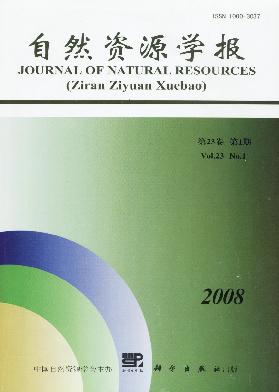Special Column:Celebration of the 70th Anniversary of IGSNRR, CAS
WANG Yan-lin, WANG Wen-ke, QIAN Yun-ping, DUAN Lei, YANG Ze-yuan
Base flow is one of the primary parts of the river runoff.In this paper,through the analysis of base flow of 10 control stations on the mainstream and 15 tributaries from the 1950's to 2000,the authors firstly analyzed the characteristics and driving forces of base flow of the mainstream and tributaries of the Yellow River basin.The result showed that first,the base flow of the Yellow River is 44% of runoff of the Yellow River,and so it is important to maintain sustainable development of the river.Second,influenced by the natural change and human activity,base flow of the mainstream and tributaries of the Yellow River basin is down generally in the past 50 years,base flow of tributaries of the Yellow River basin is divided into three types as double-humped curve,single-humped curve and linear decrease curve,base flow between two stations of the mainstream of the Yellow River is mainly reduced in the middle reaches of the Yellow River.Third,base flow of the Yellow River has such eco-environmental functions as maintaining runoff,keeping river eco-environment and improving surface vegetation.Reduction of base flow of the Yellow River leads to negative eco-environmental effect such as lake shrinkage,vegetation degeneration,aggravating Yellow River cut-off.Forth,formation,development and evaluation of base flow of the Yellow River are the integrative effect of natural factor and human factor.The result showed natural factor,mainly including precipitation,decides the structure in time and space of base flow of the Yellow River basin.Human factor,including riverside pumping,metal mining,building reservoir,soil and water conversation,exerts influence on increasing or decreasing base flow of the Yellow River.Exploitation and utilization of groundwater is the most important factor in all kinds of human factors.The human activity is intense and frequent in the middle reaches and Datonghe river,Huangshui river basin of the upper reaches of the Yellow River,where the base flow of the Yellow River is reduced significantly.So,maintaining normal Yellow River condition needs scientifically protecting and rationally exploiting and utilizing base flow of the Yellow River.
